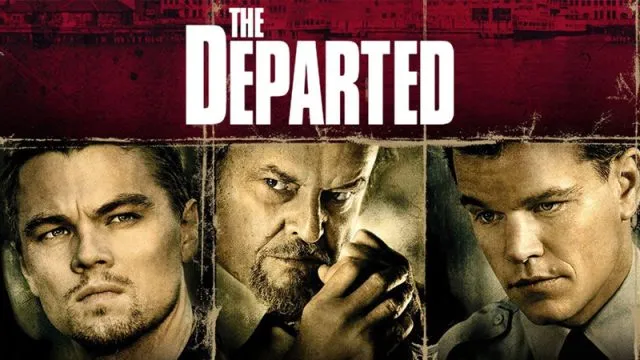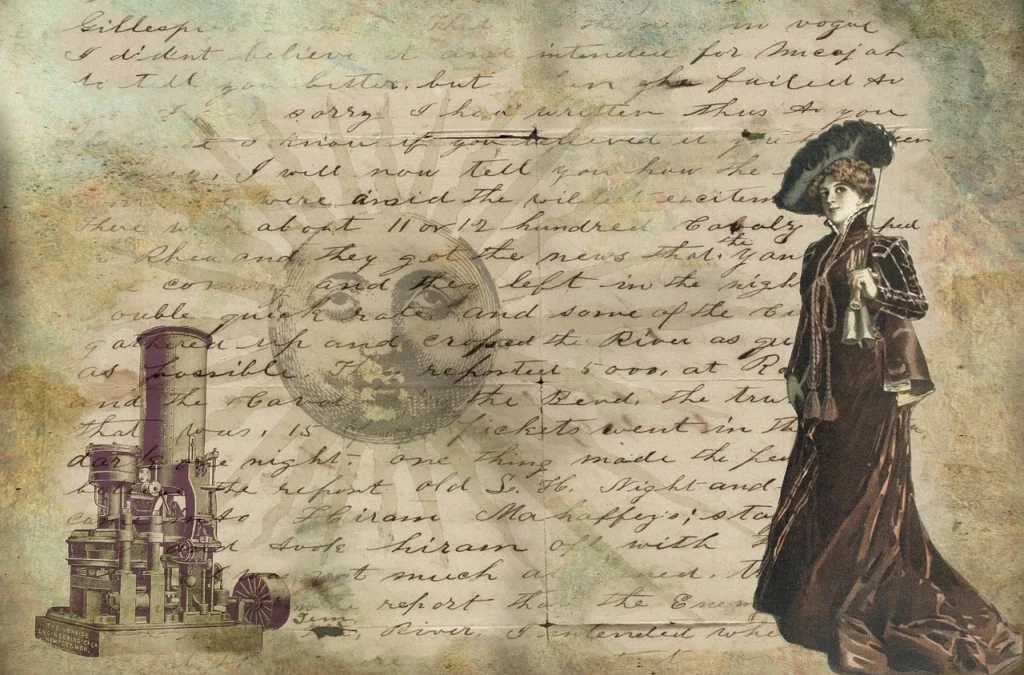
by Robyn Bolton | Jan 23, 2024 | Innovation, Just for Fun, Leadership, Stories & Examples
It’s award season, which means that, as a resident of Boston, I have the responsibility and privilege to talk about The Departed (pronounced: The Dep-ah-ted). The film won the Oscar for Best Picture in 2007 and earned Martin Scorsese his first, and to date only, Academy Award for Best Director. It is also chock-full of great lessons for corporate innovators.
Quick Synopsis
If you’ve seen The Departed, you can skip this part. If you haven’t, why not and read on.
The Departed is loosely based on notorious Boston crime boss Whitey Bulger and features three main characters:
- Frank Costello (Jack Nicholson), a vicious and slightly unhinged Irish mob boss
- Colin Sullivan (Matt Damon), a Massachusetts State Trooper in the Special Investigation Unit (SIU) formed to catch Costello, who, in his spare time, is a spy for Costello.
- Billy Costigan (Leonardo DiCaprio), a police academy recruit who goes undercover to infiltrate Costello’s organization
But wait! There’s more. Alec Baldwin plays Colin’s SIU boss, George Ellerby. Martin Sheen and Mark Wahlberg (who received an Oscar nomination for this role) play Billy’s Mass State Police (MSP) bosses, Captain Queenan and Staff Sergeant Dignam, respectively. Completing the chaos is Vera Farmiga, who plays Madolyn Madden, Colin’s girlfriend and Billy’s court-ordered psychiatrist.
There’s a lot of other stuff going on, but that gives you enough context for the following quotes to hopefully make sense.
Listen to the words people use.
Colin (after Dignam refuses to hand over undercover files): I need those passwords.
Ellerby: No, you want those passwords
It’s not often that Ellerby says something useful, let alone wise, but he nails it with this one. Colin wants the passwords to Dignam’s files on undercover agents because it will make both Colin’s official job of finding Costello’s rat in the MSP and his unofficial job of finding the MSP officer in Costello’s crew easier. He doesn’t need the passwords, however, because, with enough time and effort, he can find the rats he’s looking for.
When we hear from customers that they want something, it’s tempting to run off and create it. But as Ellerby points out, wants and needs are different. Just because customers want something doesn’t mean they are willing to pay for or change their behavior to get and use it.
Figuring out what a customer needs is difficult because it requires them to trust you enough to admit they have a problem they can’t solve. It’s also difficult because most of us have access to solutions to our functional needs (think the bottom few layers of Maslow’s hierarchy). As a result, the needs consumers grapple with tend to be emotional and social, and it’s far more challenging to admit those to a stranger, especially in a focus group or product-focused interview.
How you feel impacts everyone around you
Madolyn (after a counseling session): Why is the last patient of the day always the hardest?
Billy: Because you’re tired, and you don’t give a sh*t. It’s not super-natural.
Billy and Madolyn get off to a rough start in their first counseling session, culminating in Billy asking for a prescription for Valium. Madolyn calls him out for “drug-seeking behavior” and throws two Valiums across the desk before Billy storms out. A few minutes later, Madolyn catches up with Billy, hands him a prescription for Valium, and asks the above question.
Being a corporate innovator can be difficult, sometimes soul-crushing work (ask the good people at Store 8). It can also be thrilling and inspiring. It can even be all those things in one day. That’s what makes it tiring, even when you give a sh*t.
Managing your energy and monitoring your behavior are leadership qualities we don’t discuss often enough. It’s okay to be exhausted after a day of facilitating ideation sessions or intense strategic meetings. It’s normal to be frustrated after a contentious conversation or demotivated when you get bad news. But leaders usually find a way to not take those emotions out on their teams. And, in the rare instance when they punish the team for someone else’s sin, they apologize and explain.
Your job is not your identity.
Billy: Look, I just want my identity back, all right? That’s all.
Colin: All right, I understand. You want to be a cop again.
Billy: No, no, being a cop’s not an identity. I want my identity back.
Towards the end of the film, Billy is tired of working undercover and reports to MSP headquarters to complete the paperwork required to expunge his criminal record and get his identity back. That’s when Colin makes the same mistake most of us make and confuses Billy’s job with his identity.
We spend so much time at work. We rely on our paychecks for so much. We even introduce ourselves to new people using our job titles. It’s easy for your job to feel like your identity, especially when your job aligns so closely with your deeply held beliefs and values. But your job is not your identity. You are still a Tempered Radical, even without your corporate title. You are still an optimistic problem-solver, even when it’s been months since your last brainstorming session.
You are an innovator, even if you don’t have a business card to prove it.

by Robyn Bolton | Jan 17, 2024 | Innovation, Just for Fun
Fabric & Home Care Marketing
That is the job title on my very first business card. I remember holding the card in my hands, staring at it for entirely too long, and thinking, “This is sooooo boring. Even my parents won’t be impressed.”
To be fair to P&G, that was the job title on the business card of everyone in marketing in the business units. The company didn’t put job titles on the card for security reasons (or at least that’s what my boss told me when I politely asked why my title wasn’t on the card).
I am older now and should have the maturity to accept the bland and nondescript title on my first business card. But I’m not. It’s still boring, and it shouldn’t be because we were working on innovation projects with code names and outfoxing corporate spies in the airport (another story for another post). We were doing cool stuff and should have cool titles to show for it!
So, to right the wrong inflicted upon me and the countless others stuck with boring job titles despite doing brave, bold, and daring things, today is Make Your Own Title Day (business cards not included)
Intrapreneur
PRO: Short and sweet with a great original definition – “dreamers who do”
CON: Everyone will think you misspelled Entrepreneur
Pirates in the Navy
PRO: Title of a book by one of the foremost thinkers in the field of corporate innovation and a phrase inspired by Steve Jobs’ statement that it’s better to be a pirate than be in the Navy. It also creates the excuse to wear an eyepatch, talk like a pirate, and keep a parrot in the office.
CON: People are afraid of pirates. You don’t want people to be scared of you.
Rebel Smuggler
PRO: Also the basis of a book with the benefit of being a cool title that doesn’t scare people. Plus, who wanted this to describe them:
Whether you’re are a Rebel in a functional company or a Smuggler in a dysfunctional company, you are the essential part of any transition. You are the catalyst that transforms the caterpillar into a butterfly. You disrupt the status quo and create opportunities for growth,
You are not the caterpillar nor the butterfly. You are the magic that prompts the transition.”
Natalie Neelan, Rebel At Work: How to Innovate and Drive Results When You Aren’t the Boss
CON: Legal and Corporate Security may not love the “Smuggler” part of the title
Tempered Radical
PRO: A more “professional” version of Rebel Smuggler, and it’s a term used in HBR, so you know it’s legit. Here’s how they’re described:
They all see things a bit differently from the “norm.” But despite feeling at odds with aspects of the prevailing culture, they genuinely like their jobs and want to continue to succeed in them, to effectively use their differences as the impetus for constructive change. They believe that direct, angry confrontation will get them nowhere, but they don’t sit by and allow frustration to fester. Rather, they work quietly to challenge prevailing wisdom and gently provoke their organizational cultures to adapt. I call such change agents tempered radicals because they work to effect significant changes in moderate ways.
Debra Meyerson, “Radical Change, the Quiet Way” in HBR (October 2001)
CON: Sometimes working quietly doesn’t work. Sometimes, you need to make a ruckus.
[YOUR TITLE HERE]
What title do you want to give yourself and other innovators?
Drop your suggestion in the comments (and feel free to print up new business cards)!

by Robyn Bolton | Nov 28, 2023 | Innovation, Just for Fun, Leadership
“Yes, and….”
You know it. You love it. You may even use it.
The phrase is a core principle of improv that has become the “magic” brainstorming phrase. On stage, it encourages acceptance and collaboration, and in innovation, it quiets the critics (“No, because”), one-uppers (“No, but”), and passive-aggressive show-offs (“Yes, but”).
And there are other core Improv principles that will help you lead your team to innovation success.
You probably know them. You may or may not love them. And you definitely need to use them.
1. Be human
As Alla Weinberg pointed out in our conversation about Psychological Safety, “People are messy.” YOU are a person (I assume), meaning YOU are messy. And that’s ok because guess what? Your boss, team, and even that super annoying person in (fill in the function) are people, meaning they’re messy.
Improv embraces the mess. When someone says the wrong thing, something unexpected happens, or everything goes wrong, the actors don’t stand around, point fingers, and complain. They embrace the opportunity to step into the scene, support their fellow actor, and move things forward. Plus, a Coach Beard says, “Perfection sucks. Perfect is boring.”
2. Connect
Building genuine and authentic relationships is central to building Psychological Safety. It’s also central to great Improv. Consider this example:
If two performers come on stage and only talk about the muffins they are baking, it’s going to be a boring scene. The audience doesn’t care about the muffins! What they really want to know is how these characters feel, especially about each other. Is one character sad because her daughter is about to go off to college, and she will miss spending time with her? Or is the other character fearful because she will have to navigate adulthood without her mom nearby? If the scene doesn’t focus on the relationship, it isn’t going very far. In order to connect well in the scene, improvisers must be attuned to one another.
If all you do as a leader is talk about your calendar, your To-do list, and deadlines, people aren’t going to care about the work. They’ll do the work because that’s what you pay them to do. But they won’t care enough to problem-solve (they’ll ask you for the solution), suggest improvements (they’ll do what you ask), or develop new ideas (they’ll wait for your orders). As a leader, you need to connect to create. That applies to creating solutions, new businesses, and the next generation of leaders.
3. Actively Listen
Active listening isn’t just about nodding your head while someone else speaks. Active listening requires giving full attention to the speaker, letting go of judgment, and understanding their point of view. You don’t have to agree with what they’re saying, but you do have to understand and respond to it.
Actively listening, understanding, and responding are essential to Improv. When an actor does something completely unexpected, their fellow actors can’t ignore it because that will destroy the show. They respond to it and build on it. After all, you shouldn’t say “Yes and” if you don’t know what you’re saying yes to.
4. Pivot
Pivoting is hard. It’s hard to admit something isn’t working, and often harder to figure out what will work while you’re in the middle of doing the thing that doesn’t work. And that’s what Improv actors have to do all the time. You may not notice because it looks easy. But it only looks easy because they practice all the time.
Flexibility, adaptability, and the ability to change quickly are all skills that can be developed. But you must practice. Some people are naturally more comfortable making changes, but everyone can learn skills and tools to recognize when a change in direction is required and quickly sort through the options to find the next best option.
5. Have fun
Improv is hard work, and it’s fun. Innovation is hard work and (it should be) fun. We spend too much time at work and with our colleagues to not have fun, laugh, or enjoy ourselves. Work will never be all rainbows and unicorns, just like not every Improv sketch will be hilarious. But there must be moments of fun, laughter, and joy because you can’t create or innovate when you’re overwhelmed, downtrodden, or burned out.
As Jeff Ash, Director of Westside Improv, explains:
“Play unlocks the creative spirit that we all have. When people lose a creative spirit and get engulfed in whatever they’re doing in their day-to-day lives, I believe it impacts our ability to connect, build relationships, and be in community.”
What are other lessons we can learn from Improv?

by Robyn Bolton | Feb 23, 2023 | Innovation, Just for Fun, Leadership, Stories & Examples
Do you sometimes feel like you’re living in an alternate reality?
If so, you’re not alone. Most innovators feel that way at some point.
After all, you see things that others don’t.
Question things that seem inevitable and true.
Make connections where others only see differences.
Do things that seem impossible.
It’s easy to believe that you’re the crazy one, the Mad Hatter and permanent resident of Wonderland.
But what if you’re not the crazy one?
What if you’re Alice?
And you’re stepping through the looking glass every time you go to work?
In Lewis Carroll’s book, the other side of the looking glass is a chessboard, and all its inhabitants are chess pieces that move in defined and prescribed ways, follow specific rules, and achieve defined goals. Sound familiar?
Here are a few other things that may sound familiar, too
“The rule is, jam tomorrow and jam yesterday – but never jam today.” – The White Queen
In this scene, the White Queen offers to hire Alice as her lady’s maid and pay her “twopence a week and jam every other day.” When Alice explains that she doesn’t want the job, doesn’t like jam, and certainly doesn’t want jam today, the queen scoffs and explains the rule.
The problem, Alice points out, is that it’s always today, and that means there’s never jam.
Replace “jam” with “innovation,” and this hits a little too close to home for most innovators.
How often do you hear about the “good old days” when the company was more entrepreneurial, willing to experiment and take risks, and encouraged everyone to innovate?
Innovation yesterday.
How often do you hear that the company will invest in innovation, restart its radical innovation efforts, and disrupt itself as soon as the economy rebounds, business improves, and things settle down a bit? Innovation tomorrow.
But never innovation today. After all, “it’s [innovation] every other day: today isn’t any other day, you know.”
“When I use a word, it means just what I choose it to mean – neither more, not less.” – Humpty Dumpty
In this scene, poor Alice tries to converse with Humpty Dumpty, but he keeps using the “wrong” words. Except they’re not the wrong words because they mean exactly what he chooses them to mean.
Even worse, when Alice asks Humpty to define confusing terms, he gets angry, speaks in a “scornful tone,” and smiles “contemptuously” before “wagging his head gravely from side to side.
We all know what the words we use mean, but we too often think others share our definitions. We use “innovation” and “growth,” assuming people know what we mean. But they don’t. They know what the words mean to them. And that may or may not be what we mean.
When managers encourage people to share ideas, challenge the status quo, and take risks, things get even trickier. People listen, share ideas, challenge the status quo, and take risks. Then they are confused when management doesn’t acknowledge their efforts. No one realizes that those requests meant one thing to the managers who gave them and a different thing to the people who did them.
“It takes all the running you can do, to keep in the same place. If you want to go somewhere else, you must run at least twice as fast as that!” – The Red Queen
In this scene, the Red Queen introduces life on the other side of the looking glass and explains Alice’s new role as a pawn. Of course, the explanation comes after a long sprint that seems to get them nowhere and only confuses Alice more.
When “tomorrow” finally comes, and it’s time for innovation, it often comes with a mandate to “act with urgency” to avoid falling behind. I’ve seen managers set goals of creating and launching a business with $250M revenue in 3 years and leadership teams scrambling to develop a portfolio of businesses that would generate $16B in 10 years.
Yes, the world is moving faster, so companies need to increase the pace at which they operate and innovate. But if you’re doing all you can, you can’t do twice as much. You need help – more people and more funding, not more meetings or oversight.
“Life, what is it but a dream?”
Managers and executives, like the kings and queens, have roles to play. They live in a defined space, an org chart rather than a chessboard, and they do their best to navigate it following rules set by tradition, culture, and HR.
But you are like Alice. You see things differently. You question what’s taken as given. And, every now and then, you probably want to shake someone until they grow “shorter – and fatter – and softer – and rounder – and…[into] a kitten, after all.”
So how do you get back to reality and bring everyone with you? You talk to people. You ask questions and listen to the answers. You seek to understand their point of view and then share yours.
Some will choose to stay where they are.
Some will choose to follow you back through the looking glass.
They will be the ones who transform a leadership problem into a leadership triumph.

by Robyn Bolton | Jan 31, 2023 | Innovation, Just for Fun
Day 1
Oh innovation, a journey just begun
A bold quest filled with challenges, risks, and dreams,
A path of creativity, knowledge and fun,
That will bring change, growth and a brighter scene.
Do not be afraid, though unknowns abound,
For greatness starts with small unsteady steps
Take courage and embrace each change that’s found,
And trust that success will be the final event.
Remember, every challenge is a chance,
To learn, grow, and shape thy future bright,
And every obstacle a valuable dance,
That helps thee forge a path that’s just and right.
So go forth, my friend, and boldly strive,
To make innovation flourish and thrive.
The Abyss (Death and Rebirth)
Fight on corporate innovator, who art so bold
And brave despite the trials that thou hast,
Thou hast persevered through promises cold,
And fought through budget cuts that came so fast.
Thou hast not faltered, nor did thou despair,
Despite the lack of resources at thy door,
Thou hast with passion, worked beyond repair,
And shown a steel spine that’s hard to ignore.
Thou art a shining example to us all,
A beacon of hope in times that are so bleak,
Thou art a hero, standing tall and strong,
And leading us to victories that we seek.
So let us celebrate thy unwavering faith,
And honor thee, innovator of great grace.
The Triumph
My dear intrapreneur, well done,
The launch of thy innovation is a feat,
A result of years of hard work, and fun,
That sets a shining example for all to meet.
Thou hast persevered through many a trial,
With unwavering determination and drive,
And now, thy hard work doth make thee smile,
As thy business doth grow and thrive.
This triumph is a testament to thee,
Of thy creativity, passion, and might,
And serves as a reminder of what can be,
When we pour our hearts into what is right.
So let us raise a glass and celebrate,
Thy success, and the joy innovation hath created!
These sonnets were created with the help of ChatGPT

by Robyn Bolton | Nov 17, 2022 | Innovation, Just for Fun
You know ALL the innovation tools and frameworks:
- Design Thinking
- Lean Startup
- Disruptive Innovation
But knowing and doing are two different things. When I first learned Jobs to be Done, it felt painfully obvious, exactly like the customer research I did for five years at P&G. Then I had to do it (conduct a Jobs to be Done interview), and it was difficult (ok, it was a disaster).
And teaching others to do it is a third entirely different thing. Because by the time you have the skills and expertise to teach others, you’ve forgotten what it was like to start from the beginning.
It’s easy to forget that before you can read a sentence, you must know how to read a word. Before you can read a word, you must recognize a letter.
So let’s go back to basics. Back before the methodologies. Before the frameworks. Before the theories. Let’s go back to the letters and words that are Innovation’s essence.
Let’s go back to the Innovation Alphabet.
Assumptions, every innovation has them, and every innovator tests them to reduce risk
Brainstorming, a great way to get lots of ideas and maybe even some new ones
Customers, the people we innovate for
Disruptive Innovation, cheaper, lower quality products that appeal to non-consumers
Experiments, how you test assumptions and reduce risk
Fun, what innovation should be
G
Hope, it springs eternal in the heart of every innovator
Ideas, where most innovations start
Jobs to be Done, the problems people have/the progress they want to make (and the hill I will die on)
K
Leadership, the most crucial element in innovation (and often the biggest barrier)
Mistakes, how we learn, grow, and make progress
No, the start of a conversation, not the end
Opportunities, a nice term for “problem”
Problems, where all innovations should start
Quiet, what we sometimes need to think big and create something new
R
S
Team, how innovation gets done
Uncomfortable, what innovation should make you (especially if you’re a senior executive)
V
W
X
whY, the one question you can never ask enough
Zzzz, what you finally get to do when you’ve changed the world
As you can see, some letters still need words. What should they be?
Are there better words for some letters?
Let me know in the comments!





